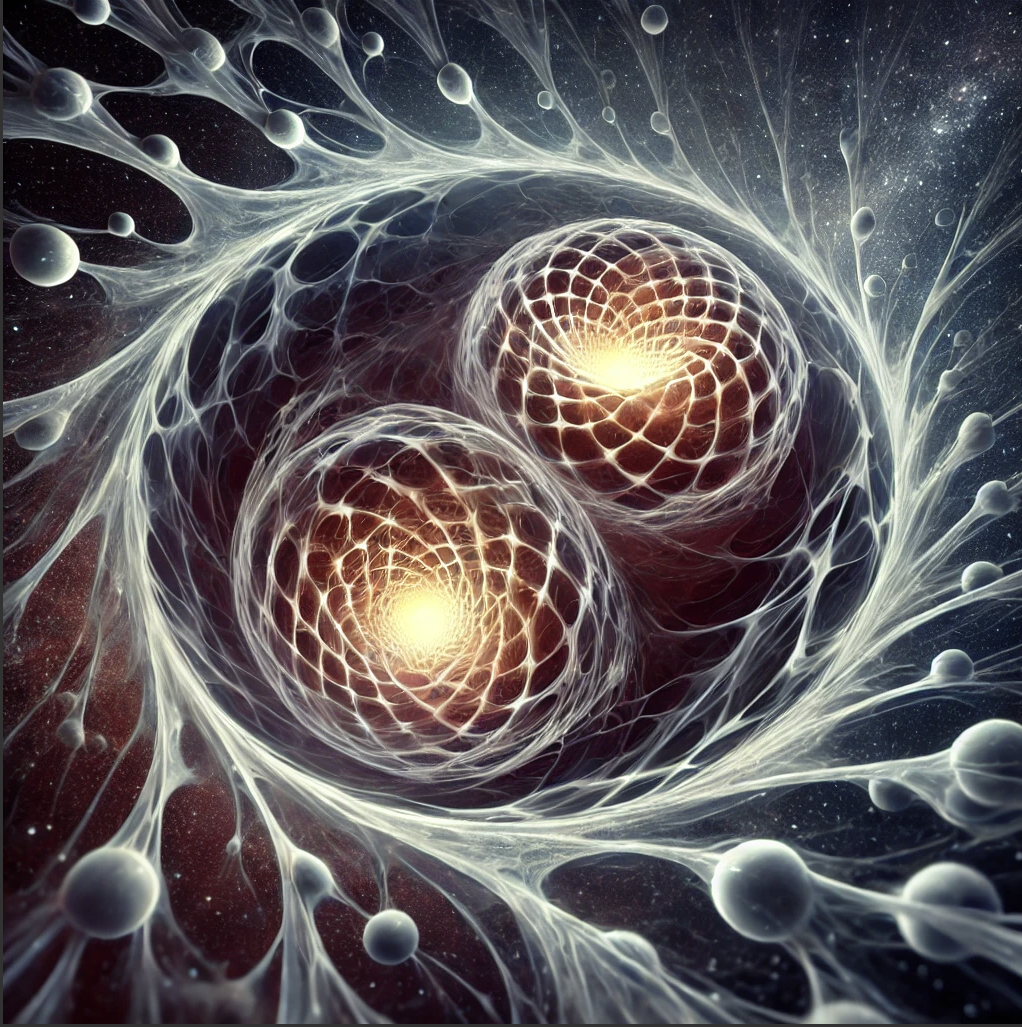
Consider this an inverted standard model where past and history are packed into now nullifying velocity. Then contrast towards normal throughout.
When excluding the speed of light to ignore time computation, once general is flattened to special. If each void of spherical energy presses outwards within a spacetime of near perfect singularity, then those two voids no matter the distance are pressed towards one another due to the alleviation.
That is why I like to imagine that we are the speed of light pressing outward, while gravity represents the ratio of spherical alleviations. Consider the influence of the left-hand rule on a particle moving with cohesion: the deposited energy rotates the particle, causing a spherical expansion of reflected energy. For instance, an accelerating spaceship passing near a planet would experience this influence due to displacement, dispersing energy spherically. This effect reduces resistance in some areas while increasing pressure in others, converting into additional motion. A spherical convention is particularly useful for localizing resistance changes.
In contrast, to relax back into Newtonian physics, imagine a mechanics class where the engine wants to exceed redline while forces behind the wheel work to maintain safety. This echoes the approach of regression to general relativity, where mathematical singularities guide the transformation using spherical conversions.
Think of the nucleon as a system where waveform trades create packets of cohesion. This alternating balance allows forces within the nucleon to engage in a balanced exchange of time for distance, gluons like the AC waveforms in particle accelerators. The result is a kinematic stability, preventing cohesive decay by maintaining the overall structure of the nucleon.
Within the spirit of what might have sparked above. Consider gluons the bosonic flowing tubes (vascular array) that conduct work where quarks might be the ports. The nucleon a balance of bilge pressure to cohesive compression.
Consider quarks the fermion organization lattice, they would reflect some wavelengths out, absorb some energy to work like a polarizing lens within their lattice, and with reverb sorting the remainder. Routing wavelengths to gluonic pumps that accelerate the energy either throughout the nucleon or back towards the quarks further processing wavelengths. The nucleon a balance of bilge pressure to universal cohesive compression balanced in functions of harmony.
Slipping Knots/clumps (particles) that can fit through loops of cohesive bands in the right circumstance. Capital K (Character of a line with a vertex pointed out on the line) to represent the importance of maintaining origins of model interactions, interlinks describing band sites of systems.
The gluons (bilge pumps) might prevent the EM from sinking to center in nucleons.
